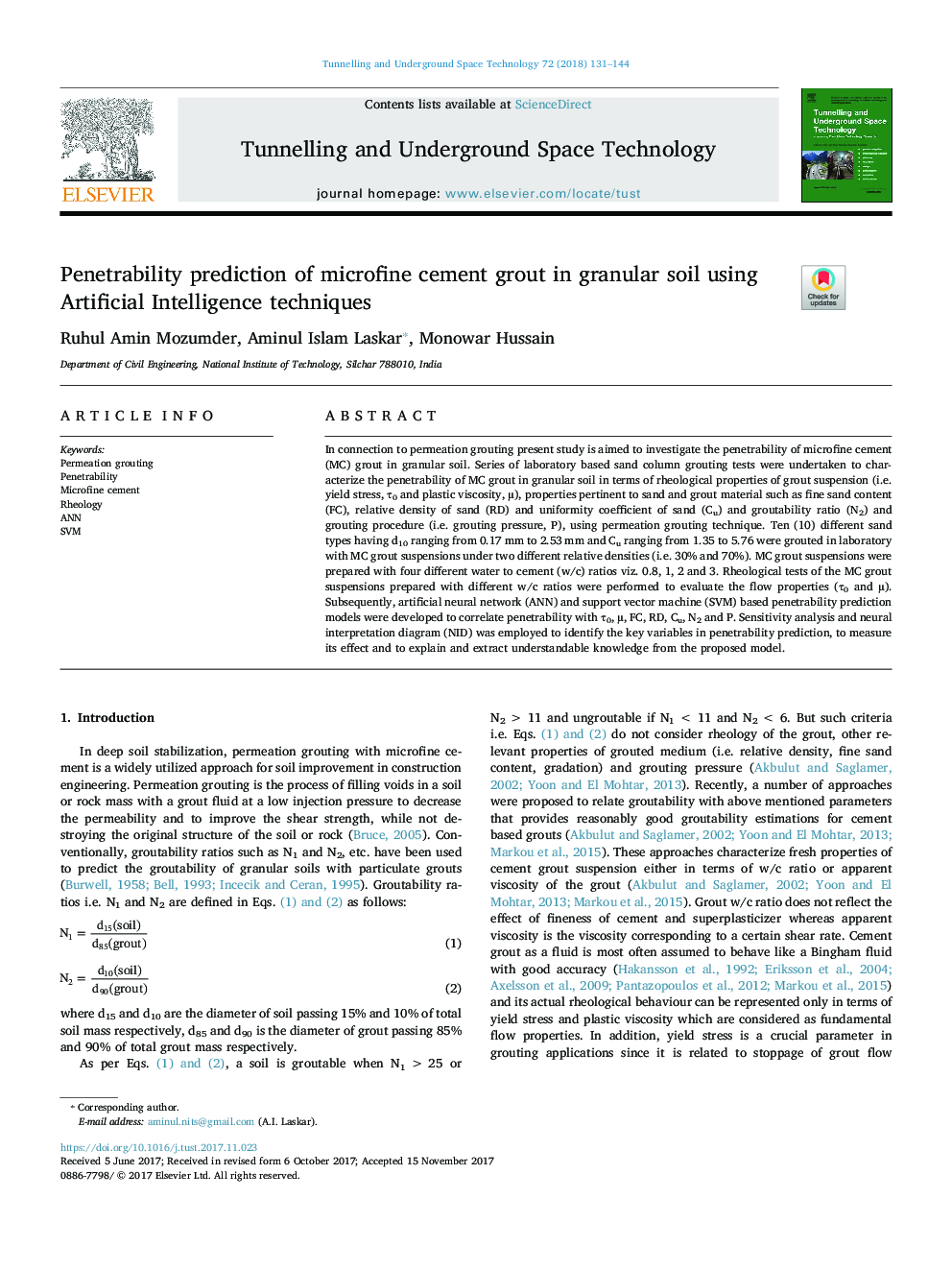| کد مقاله | کد نشریه | سال انتشار | مقاله انگلیسی | نسخه تمام متن |
|---|---|---|---|---|
| 6782748 | 1432274 | 2018 | 14 صفحه PDF | دانلود رایگان |
عنوان انگلیسی مقاله ISI
Penetrability prediction of microfine cement grout in granular soil using Artificial Intelligence techniques
ترجمه فارسی عنوان
پیش بینی نفوذ پذیری سیمان میکرو فین در خاک دانه ای با استفاده از تکنیک های هوش مصنوعی
دانلود مقاله + سفارش ترجمه
دانلود مقاله ISI انگلیسی
رایگان برای ایرانیان
کلمات کلیدی
موضوعات مرتبط
مهندسی و علوم پایه
علوم زمین و سیارات
مهندسی ژئوتکنیک و زمین شناسی مهندسی
چکیده انگلیسی
In connection to permeation grouting present study is aimed to investigate the penetrability of microfine cement (MC) grout in granular soil. Series of laboratory based sand column grouting tests were undertaken to characterize the penetrability of MC grout in granular soil in terms of rheological properties of grout suspension (i.e. yield stress, Ï0 and plastic viscosity, µ), properties pertinent to sand and grout material such as fine sand content (FC), relative density of sand (RD) and uniformity coefficient of sand (Cu) and groutability ratio (N2) and grouting procedure (i.e. grouting pressure, P), using permeation grouting technique. Ten (10) different sand types having d10 ranging from 0.17â¯mm to 2.53â¯mm and Cu ranging from 1.35 to 5.76 were grouted in laboratory with MC grout suspensions under two different relative densities (i.e. 30% and 70%). MC grout suspensions were prepared with four different water to cement (w/c) ratios viz. 0.8, 1, 2 and 3. Rheological tests of the MC grout suspensions prepared with different w/c ratios were performed to evaluate the flow properties (Ï0 and µ). Subsequently, artificial neural network (ANN) and support vector machine (SVM) based penetrability prediction models were developed to correlate penetrability with Ï0, µ, FC, RD, Cu, N2 and P. Sensitivity analysis and neural interpretation diagram (NID) was employed to identify the key variables in penetrability prediction, to measure its effect and to explain and extract understandable knowledge from the proposed model.
ناشر
Database: Elsevier - ScienceDirect (ساینس دایرکت)
Journal: Tunnelling and Underground Space Technology - Volume 72, February 2018, Pages 131-144
Journal: Tunnelling and Underground Space Technology - Volume 72, February 2018, Pages 131-144
نویسندگان
Ruhul Amin Mozumder, Aminul Islam Laskar, Monowar Hussain,
